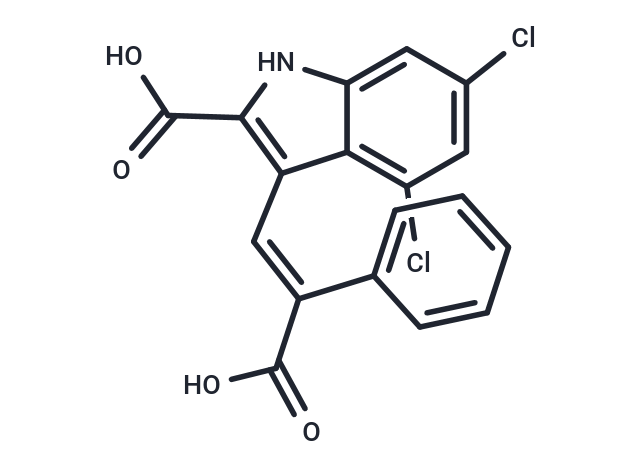Shopping Cart
- Remove All
 Your shopping cart is currently empty
Your shopping cart is currently empty

MDL 105519 is an effective antagonist of glycine binding to the NMDA receptor.

| Pack Size | Price | Availability | Quantity |
|---|---|---|---|
| 2 mg | $59 | 5 days |
| Description | MDL 105519 is an effective antagonist of glycine binding to the NMDA receptor. |
| In vitro | MDL 105519 is approximately 10,000-fold selective for the glycine recognition site relative to the other receptor types investigated. MDL 105519 is an effective and selective ligand for the glycine recognition site that completely inhibit the binding of [3H]glycine to rat brain membranes (Ki: 10.9 nM). MDL 105519 inhibits NMDA-dependent responses, such as elevations of [3H]TCP binding in brain membranes, cyclic GMP accumulation in brain slices, and alterations in cytosolic Ca2+ and Na+-Ca2+ currents in cultured neurons. Its inhibition is non-competitive with respect to NMDA and could be nullified with D-serine. |
| In vivo | MDL 105519 acts as an NMDA receptor antagonist in vivo, effectively blocking harmaline-induced increases in cerebellar cyclic GMP levels through intravenous administration, demonstrating its biochemical antagonistic properties. It exhibits anxiolytic effects in rat separation-induced vocalization tests, with noticeable muscle-relaxant properties at reduced dosages. The compound's antagonism also correlates with anticonvulsant effects across various seizure models, including genetic, chemically induced, and electrically provoked. Although higher doses compromise rotorod performance, they do not influence mesolimbic dopamine turnover or affect prepulse inhibition of the startle reflex. |
| Molecular Weight | 376.19 |
| Formula | C18H11Cl2NO4 |
| Cas No. | 161230-88-2 |
| Relative Density. | 1.594 g/cm3 (Predicted) |
| Storage | Powder: -20°C for 3 years | In solvent: -80°C for 1 year | Shipping with blue ice. | |||||||||||||||||||||||||
| Solubility Information | DMSO: 17 mg/mL (45.19 mM), Sonication and heating are recommended. | |||||||||||||||||||||||||
Solution Preparation Table | ||||||||||||||||||||||||||
DMSO
| ||||||||||||||||||||||||||

Copyright © 2015-2025 TargetMol Chemicals Inc. All Rights Reserved.